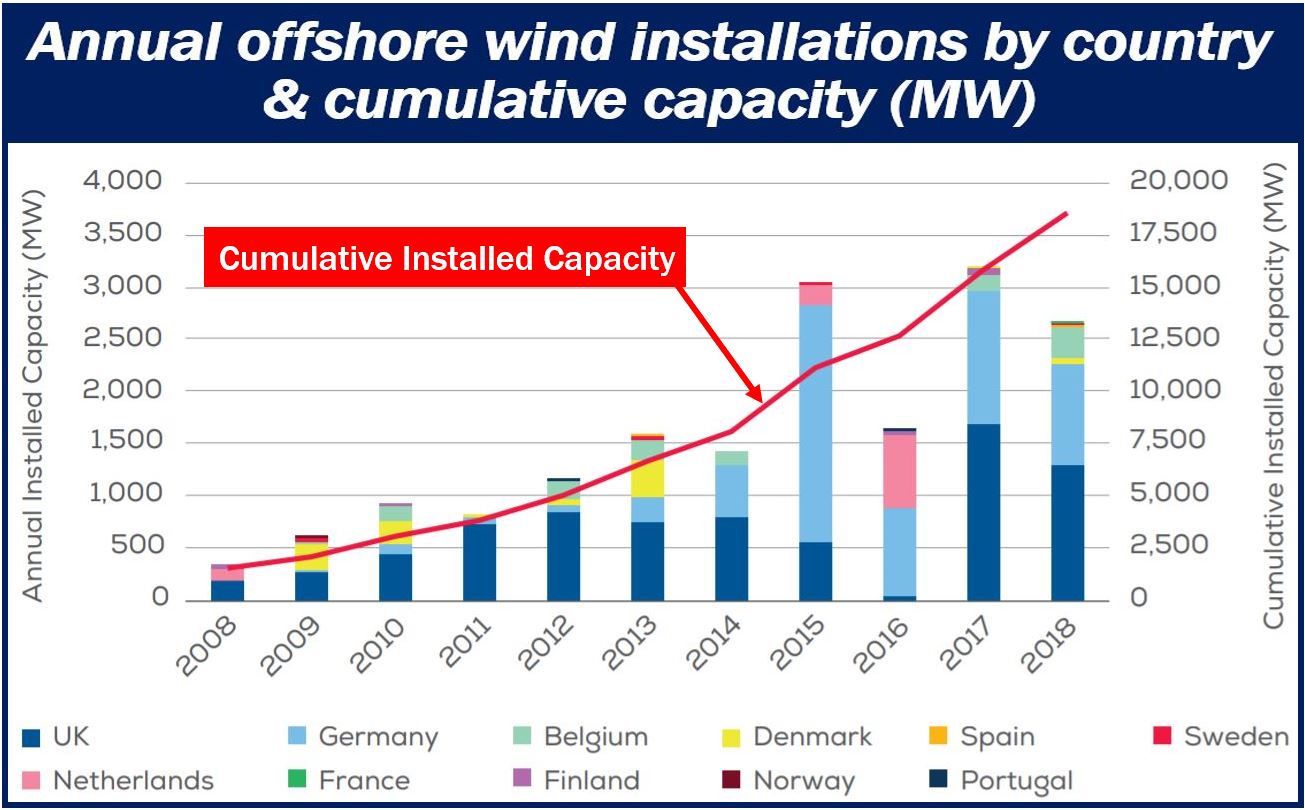
According to a new report by WindEurope, Europe installed 2.6 GW of new wind energy capacity offshore in 2018. In 2018, Europe’s wind energy capacity grew by 18%.
The report is titled ‘Offshore Wind in Europe: Key trends and statistics 2018.’
Germany and the UK accounted for 85% of new capacity – 696 MW and 1.3 GW respectively. In 2018, fifteen new offshore wind farms became active.
Europe currently has 105 offshore wind farms across eleven nations. They have a total capacity of 18.5 GW, i.e., 10% of Europe’s total wind energy capacity. The other ninety percent comes from onshore wind farms.
One GW can power 700,000 average-size homes for one year.
Wind energy capacity continues to grow
The size and scale of Europe’s offshore wind energy generation continue to increase. In 2018, the average size of new wind turbines installed was 6.8 MW, which was about 15% greater than in 2017.
The UK installed 8.8 MW turbines; the world’s largest. The country also opened the Walney 3 Extension, 657 MW, making it the world’s largest offshore wind farm.
Germany and Belgium also opened their largest wind farms to date in 2018. Six more wind farms are currently under construction across the continent.

According to a WindEurope press release:
“A further 12 new offshore wind projects reached Final Investment Decision in 2018. These represent a further 4.2 GW of capacity and €10.3bn of investment.”
“The amount invested was 37% up on 2017 but the capacity covered was up 91% – showing how quickly costs are falling and how much more bang you now get for your buck.”
Wind energy technology continues to develop
Giles Dickson, CEO ofWindEurope, said:
“Offshore wind continues to grow strongly in Europe. The total capacity expanded by a further 18% last year. Offshore wind now represents 2% of all the electricity consumed in Europe. And with a big pipeline of projects under construction and development, this number will rise significantly.”
“The technology keeps developing. The turbines keep getting bigger. And the costs keep falling. It’s now no more expensive to build offshore wind than it is to build coal or gas plants. And it’s a good deal cheaper than new nuclear.”
“More and more governments are recognising the merits of offshore wind. Poland is the latest to embrace it with an ambitious plan to build 10 GW by 2040. But a few countries are underperforming on it and risk missing out. Sweden is not building any offshore wind despite great potential.”
“Germany has only a modest target for 2030. And the ‘gamma minus’ performer is France which still has no offshore wind farms nor is it clear when they will have. These countries have a chance to put things right this year with their National Energy and Climate Plans – they should grab it with two hands.”
Video – What is wind energy
Wind energy involves capturing the energy in moving air (wind) and converting it into electricity. Wind energy is a type of renewable energy, i.e., an energy source that never runs out.
